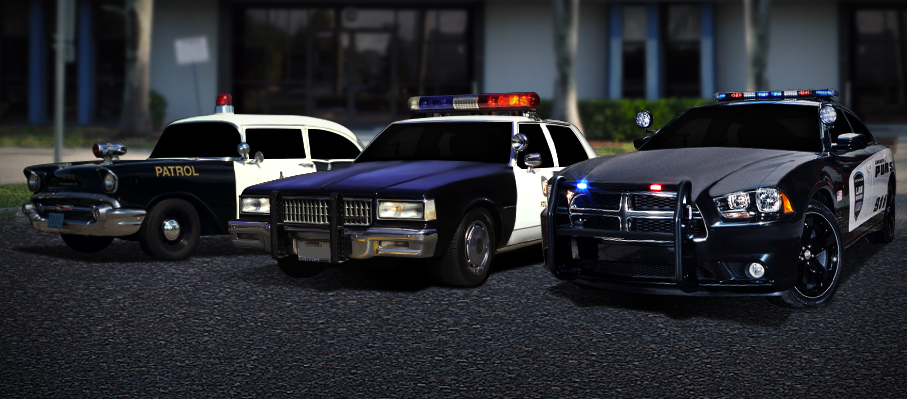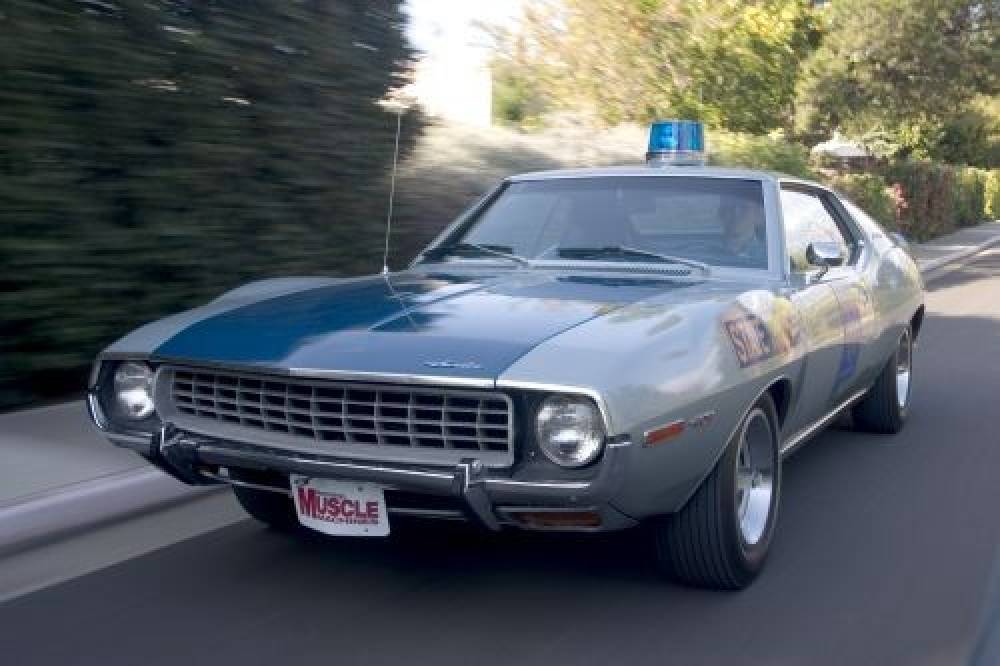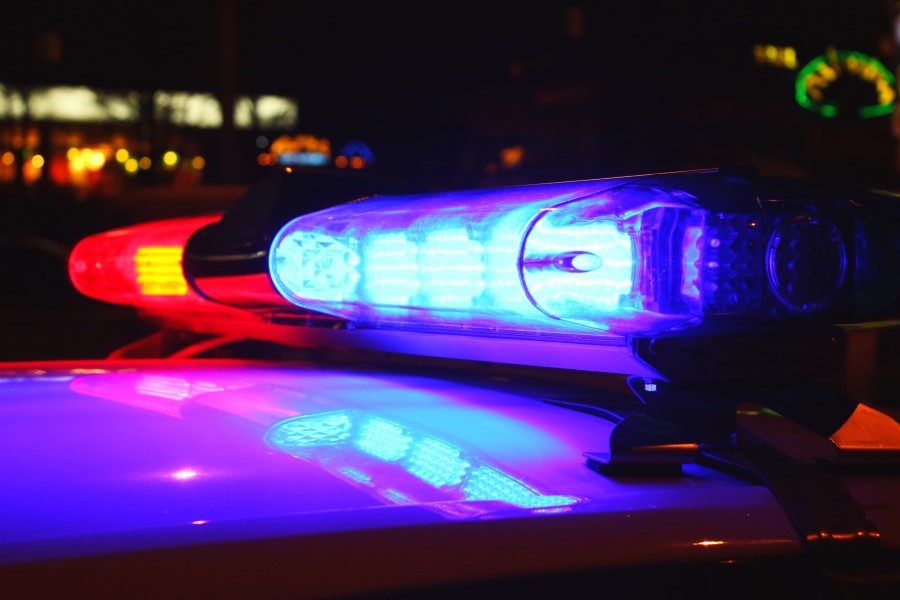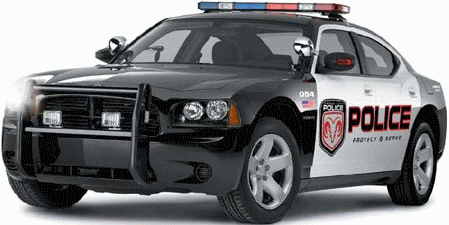By the time one sees the red and blue lights the rearview, the only thought is, how long have those been there? Then it’s, where did I leave that dang registration?
Even when the cops are clearly pulling over some other chump, the sight of those red and blue gives drivers a pause. There ’s a good reason.
Parents, teachers, and other leaders teach good Americans to straighten up and focus when those light fly. Add in a siren, and it’s perfect posture time.
Since the beginning, and in many places it’s still true today, cop cars have been the same cars citizens could buy.
Sure, engineers soup ‘em up a little, upgrade the suspensions, add some performance elements, but police forces do not contract manufacturers to design cars only for patrolling.
Ambulances and fire trucks look like nothing else on the road because they’ve been custom built for their jobs. All three of these examples use the red and blue lights.
This begs the question: why red and blue, not yellow and green? I’ll answer that in a second. First, a little background on cop car emergency lights.
Single Beacon
The first lights used by cops were single-beacon, meaning they were one light, which either flashed or revolved inside a housing.
At first, they were simply red. When exactly this started is hard to say, but sometime before World War Two.
The Single Beacons were a cheap and easy way to distinguish cop cars from other cars, especially since there was little more than a custom paint job separating them.
Over time, some of them stuck by magnets, removable as desired. Initially, they were part of the car as a permanent fixture.
Despite the antiquity of this look, the single-beacon was the style for most of the 21st century.
Blue Addition
As the years progressed, some states added a blue light to the mix, so a car might have two or three single-beacon lights, flashing more than one color.
The best theory about why blue and red alludes to the challenge of color blindness. Even color blind drivers will see one color or the other.
Another argument is that red lights disappear in the sea of tail lights. Blue makes them stand out.
Regardless, paired together, they become almost un-ignorable. Then, in the 1990s, police forces introduced something called the light bar.
Light Bar
Whoever invented the light bar should have made a killing selling them in the ’90s. Every police and sheriff outfit switched overnight from a variety of single-beacon systems to light bars.
The companies who made the single beacons also made the bars. There were variations, but the basic idea carried.
A plastic housing contained more than one beacon light, in red and blue colors. Some light bars also housed the speaker for the siren.
In more recent years, the light bar evolved into a lower profile design with higher-powered lights. They offer reduced wind resistance, but also a more stealthy approach until they flash those lights.
Many patrol cars today use a combination of halogen and LED lights. They may have interior or grill mounted lights in addition to the light bar.
Strobes
Adding to the show, police cars and other emergency vehicles now flash strobe lights. Some believe these lights could cause epileptics to have seizures, but the most recent research indicates there is no danger at the speed they flash.
One thing is for sure. A driver cannot ignore flashing strobe lights. They’re like lightning bolts to the driver’s eyes.
It’s quite a show.
Today, when a cop car turns on all the lights it’s better than some rock concerts from the ’90s. Most come with at least two spotlights as well.
Add in a guitar and a set of drums, and it’s showtime.
Sources:911signalusa.com, online-led-store.com, autoevolution.com





